This guide explores the history and evolution of Fruit of the Loom tags, offering insights for collectors and resellers to identify and date vintage tags accurately.
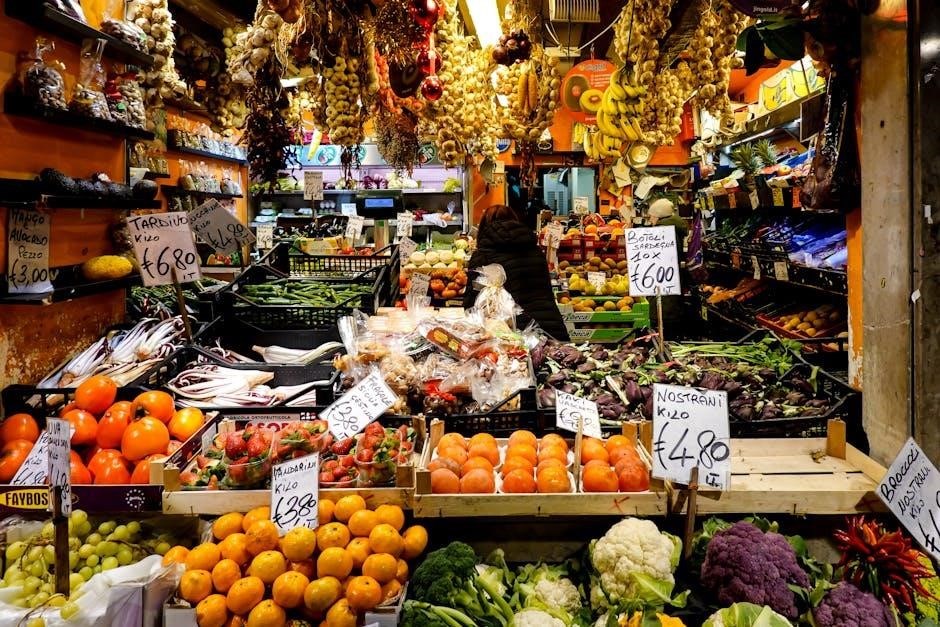
Overview of Fruit of the Loom and Its Tag System
Fruit of the Loom, founded in 1851, is a renowned textile manufacturer known for its iconic fruit logo and high-quality apparel. Its tag system, introduced to label fabrics, features detailed information about fabric content, care instructions, and branding. These tags have evolved over decades, reflecting changes in design, materials, and industry standards. They serve as a key tool for collectors and resellers to authenticate and date vintage garments. The tags often include logos, fabric blends, and sizing details, making them invaluable for identifying authentic Fruit of the Loom products. This system has become a hallmark of the brand’s commitment to quality and transparency.
Importance of Understanding Tags for Collectors and Resellers
Understanding Fruit of the Loom tags is crucial for collectors and resellers to authenticate and date vintage garments. Tags provide detailed information about fabric content, care instructions, and production eras, helping to verify the legitimacy of items. For collectors, these tags serve as a historical record, tracing the brand’s evolution. Resellers benefit by accurately identifying and pricing items, ensuring transparency in transactions. The ability to decode tags enhances credibility and trust in the marketplace. As vintage apparel gains popularity, the knowledge of tags becomes a valuable tool for distinguishing rare and authentic pieces from reproductions, ultimately impacting market value and desirability.

History of Fruit of the Loom
Founded in 1851 by Robert Knight, Fruit of the Loom became a textile icon, adopting its name in 1856 and gaining the first U.S. trademark in 1871 with its colorful fruit logo.
Founding and Early Years of the Company
Fruit of the Loom was founded in 1851 by Robert Knight as the B.B. and R. Knight Corporation, a Rhode Island textile mill producing high-quality cotton fabrics. The company’s name changed to Fruit of the Loom in 1856, inspired by a biblical phrase and a merchant’s daughter’s fruit paintings on fabric bolts. These colorful fruit images became the brand’s signature, boosting sales and leading to the first U.S. trademark in 1871. This early innovation solidified Fruit of the Loom’s identity and laid the groundwork for its enduring success in the textile industry.
Evolution of Fruit of the Loom Tags Over the Years
Fruit of the Loom tags have undergone significant changes since the company’s inception. Early tags featured simple printed labels with minimal information, focusing on fabric content. By the mid-20th century, tags began including care instructions and the iconic fruit logo. The 1980s and 1990s saw the introduction of detailed symbols and sizing information, with distinct font styles and color schemes. Modern tags are more streamlined, emphasizing comfort and sustainability. Each era’s tags reflect shifting consumer needs and design trends, making them valuable markers for collectors and historians alike.
Significance of Tags in Brand History and Identity
Fruit of the Loom tags are integral to the brand’s identity, serving as a visual representation of its heritage and values. The iconic fruit logo, introduced in the 1800s, became a hallmark of quality and reliability. Over time, tags evolved to include care instructions, fabric content, and sizing, reflecting the brand’s commitment to transparency and customer satisfaction. These tags not only function as informational tools but also as marketing devices, reinforcing the brand’s image. For collectors, vintage tags symbolize nostalgia and craftsmanship, making them highly sought after. The consistency and recognizability of Fruit of the Loom tags have cemented the brand’s place in textile history, ensuring its legacy endures through generations.
A Guide to Identifying Vintage Fruit of the Loom Tags
Identify vintage Fruit of the Loom tags by their unique logos, fabric content, and design changes over the years, helping collectors and resellers authenticate and date them accurately.
How to Recognize Authentic Vintage Tags
Authentic vintage Fruit of the Loom tags often feature distinct logos, such as the colorful fruit cluster or earlier single-fruit designs, with specific font styles and arrangements. The tags may display fabric content like 100% cotton or blends, along with care instructions. Older tags typically lack modern sizing information and may have simpler designs. The logo’s color palette and placement can also indicate the era, with earlier tags having more muted tones. Collectors should look for tags with minimal wear, as fading or damage can obscure key details. Comparing tags to known timelines or consulting collector communities can help verify authenticity and pinpoint the production period, especially for rare or hard-to-date tags.
Key Characteristics of Tags from Different Eras
Fruit of the Loom tags from different eras exhibit unique design elements that help identify their origin. Early tags, such as those from the 1980s, often feature bold fonts and simple layouts, with fabric content prominently displayed. By the 1990s, tags began incorporating more detailed care instructions and symbols, reflecting changing consumer needs. The 2000s saw the introduction of size information and country-of-origin labels, alongside more vibrant color schemes. Tags from the Y2K era often include additional branding elements, such as the iconic fruit logo variations. These distinct characteristics, including font styles, logo placements, and informational details, provide collectors with a clear timeline for dating and authenticating vintage tags, making them invaluable for identifying rare or hard-to-date items.
Year-by-Year Timeline of Tag Design Changes
Fruit of the Loom tags have evolved significantly over the years, with distinct design changes that help pinpoint their origin. In the 1980s, tags featured bold fonts and minimalistic designs, focusing primarily on fabric content. By the 1990s, care instructions became more detailed, and symbols were introduced for clarity. The early 2000s saw the addition of size labels and country-of-origin information, alongside brighter color schemes. Mid-2000s tags incorporated more branding elements, including variations of the iconic fruit logo. These yearly design shifts, from simple text to detailed graphics, provide a clear timeline for collectors to date and authenticate vintage tags, making them essential for understanding the brand’s evolution and identifying rare items.
Decoding Fruit of the Loom Tags
Understanding Fruit of the Loom tags reveals essential details like fabric content, care instructions, and size information, making it easier to identify and authenticate garments effectively.
Understanding Fabric Content and Blends
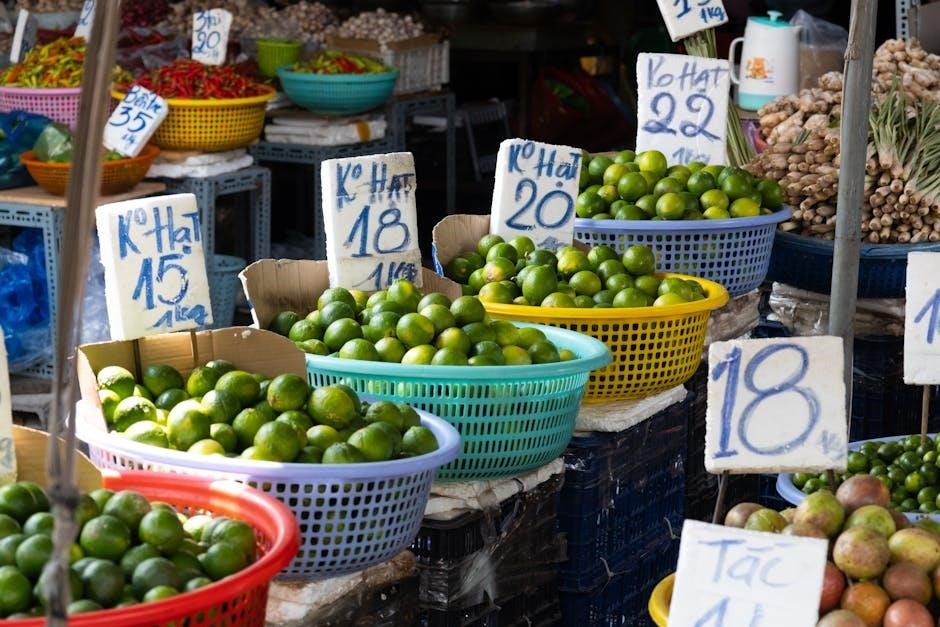
Fruit of the Loom tags provide detailed information about fabric content, helping users identify materials like cotton, polyester, or blends. This is crucial for collectors and resellers, as fabric type often indicates the garment’s era and quality. Early tags may highlight 100% cotton, reflecting the brand’s origins in natural fibers. Over time, synthetic blends became more common, offering durability and affordability. The tags also specify fabric blends, such as 60% cotton/40% polyester, which became popular in the 1980s and 1990s. These details not only aid in authenticating vintage items but also help consumers understand the garment’s care requirements and comfort level. Fabric content is a key element in decoding Fruit of the Loom tags, making it essential for enthusiasts and collectors alike.
Care Instructions and Symbols Explained
Fruit of the Loom tags feature care instructions and symbols that guide users on how to wash, dry, and maintain their garments. These symbols, often small icons, indicate methods like machine washing, hand washing, or dry cleaning. They also specify temperature settings, such as cold water only, and drying preferences, like tumble dry low or air dry. Ironing instructions are included, with symbols showing acceptable heat levels. Over time, the tags have evolved to include more detailed symbols, reflecting advancements in fabric technology. Understanding these care instructions is essential for preserving the quality of the garment. Collectors and resellers often use these symbols to verify authenticity and ensure proper care for vintage items. This section decodes these symbols, making them accessible to everyone.
Size and Fit Information on Tags
Fruit of the Loom tags provide essential size and fit details to ensure the garment meets the wearer’s needs. These tags typically include numeric sizing, such as small, medium, or large, along with measurements in inches or centimeters. Some tags may also specify fit styles, like “relaxed fit” or “slim fit,” to guide the consumer. Over the years, the tags have evolved to include more precise sizing charts, reflecting industry standards. For collectors, these details help verify authenticity and determine the era of the garment. Understanding size and fit information is crucial for both everyday use and vintage collecting, as it ensures the right fit and preserves the garment’s integrity. This section breaks down how to interpret these details effectively.
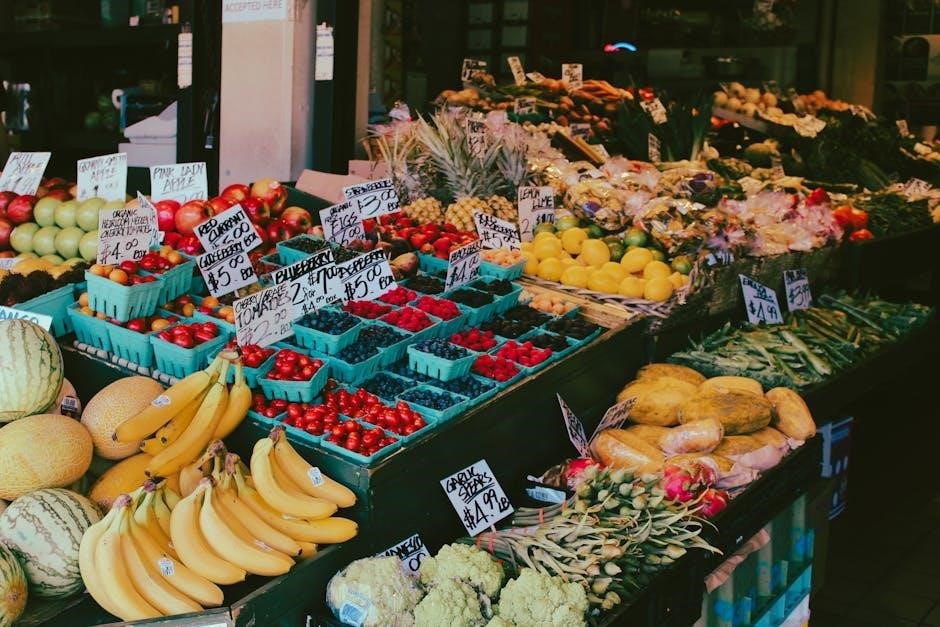
Customizing and Managing Tags
Discover methods to remove tags without damaging garments and explore creative ways to customize tags for personal or branding purposes, enhancing apparel with unique identifiers or designs.
How to Remove Tags Without Damaging the Garment

Removing Fruit of the Loom tags requires care to avoid damaging the fabric. Start by examining the tag’s attachment method. If sewn on, carefully cut the stitching with small scissors or a seam ripper, working slowly to avoid cutting the garment. For printed tags, gently peel them off or use a fabric eraser to remove ink without damaging the material. Always test a small, inconspicuous area first to ensure the method won’t harm the fabric. Avoid using harsh chemicals or excessive force, as they can weaken or discolor the garment. Proper removal ensures the apparel remains intact and ready for customization or resale.
Methods for Customizing Tags for Personal Use
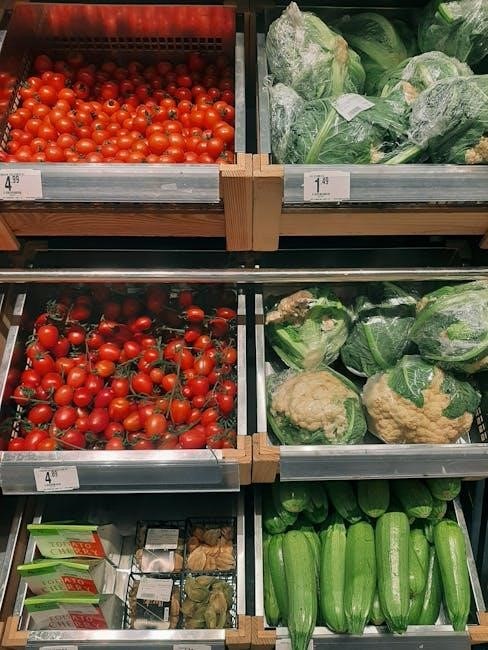
Customizing Fruit of the Loom tags allows for personalization and creativity. One method is to use fabric paint or markers to add designs or text directly onto the tag. Another option is to embroider patterns or initials for a more permanent and stylish touch. Iron-on transfers can also be applied to create intricate designs or logos. For a DIY approach, sew-on patches or appliques can be attached to the tag for a unique look. Additionally, upcycling old tags into keychains or accessories is a creative way to repurpose them. These methods enable individuals to transform basic tags into personalized elements that reflect their style or brand identity, making each garment truly one-of-a-kind.
Collecting Vintage Fruit of the Loom Tags
Collecting vintage Fruit of the Loom tags offers a fascinating glimpse into the brand’s history. Each tag, featuring detailed logos and fabric information, is a treasure for collectors and resellers.
Popular Eras for Collectors
Collectors often focus on Fruit of the Loom tags from the 1980s, 1990s, and early 2000s, as these eras showcase significant design changes. The 1980s are prized for their vibrant fruit logos and detailed fabric content, while the 1990s introduced tags with black box backgrounds, making them highly recognizable. The early 2000s saw a shift to more minimalist designs, appealing to modern collectors. These periods offer a clear timeline of the brand’s evolution, making them highly sought after by enthusiasts and resellers. Each era’s unique styling and historical significance contribute to their popularity in the vintage clothing community.
Where to Find Rare and Vintage Tags
Rare and vintage Fruit of the Loom tags can be discovered through various channels. Online marketplaces like Etsy and eBay often feature listings from resellers specializing in vintage clothing and accessories. Thrift stores, flea markets, and estate sales are also treasure troves for collectors, as they may uncover forgotten gems. Additionally, vintage clothing communities and forums often share resources and tips for locating hard-to-find tags. Some enthusiasts even use year-by-year tag guides to identify rare designs. Networking with other collectors and joining specialized groups can also lead to exclusive opportunities to acquire unique tags. Patience and persistence are key to uncovering these hidden treasures.
Market Value of Vintage Tags
Vintage Fruit of the Loom tags have become highly collectible, with their market value varying based on rarity, condition, and era. Tags from the 1980s and 1990s are particularly sought after, often fetching higher prices due to their nostalgic appeal. Rare designs, such as those with unique logos or limited editions, can command premium prices. Collectors and resellers often sell these tags on platforms like Etsy and eBay, where they can range from a few dollars to over $100 for exceptionally rare pieces. The condition of the tag significantly impacts its value, with intact, vibrant designs fetching higher prices. As interest in vintage fashion grows, the market for these tags continues to expand, making them a valuable find for enthusiasts and investors alike.
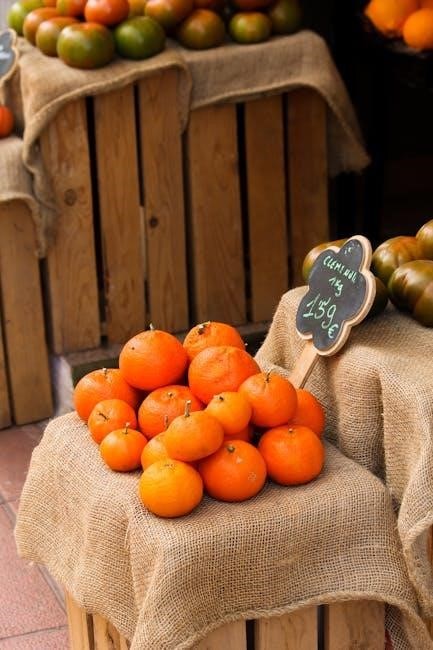
Common Misconceptions About Fruit of the Loom Tags
Many believe all vintage Fruit of the Loom tags are rare or highly valuable, but authenticity and condition often matter more than age alone.
Debunking Myths About Tag Authenticity
One common myth is that all Fruit of the Loom tags with fruit logos are vintage. However, modern reproductions often mimic classic designs, making authenticity tricky. Many believe that tags with specific fruit arrangements or colors are rare, but these variations were common in mass production. Another misconception is that tags with misspellings or odd symbols are fake, yet some genuine tags from the 70s and 80s have such quirks due to printing errors. To verify authenticity, collectors should examine stitching quality, logo clarity, and fabric type, as genuine tags typically have consistent stitching and vibrant, detailed logos. Additionally, researching production timelines and comparing tags to verified examples can help distinguish authentic from counterfeit. Understanding these factors is crucial for collectors aiming to build a genuine collection.
Clarifying Confusion Between Similar Brands
Fruit of the Loom is often confused with similar brands like Gildan, Hanes, and Jerzees due to their comparable tag designs and fabric types. However, Fruit of the Loom tags are distinct, featuring their iconic fruit logo and specific fabric blends. While Gildan tags often include a shield logo, Hanes tags typically display a comfort-focused design. Jerzees tags, on the other hand, emphasize durability and workwear aesthetics. Collectors and resellers should pay attention to these subtle differences to avoid misidentifying tags. The unique fruit imagery and historical logo variations of Fruit of the Loom set it apart, making it easier to distinguish from other brands once these characteristics are understood. This clarity is essential for accurate collecting and reselling.
Conclusion and Final Thoughts
Fruit of the Loom tags offer a fascinating glimpse into the brand’s history and evolution, providing valuable insights for collectors and resellers to authenticate and date garments effectively.
Summary of Key Points
Fruit of the Loom tags are a vital part of the brand’s identity, offering insights into its history and evolution. Founded in 1851, the company became renowned for its iconic fruit logo and high-quality textiles. Over the years, tags have evolved, reflecting changes in fabric content, care instructions, and design aesthetics. Collectors and resellers can use these tags to date garments, with distinct eras identifiable through logo variations and printing styles. Understanding these tags not only aids in authentication but also highlights the brand’s adaptability to market trends. This guide provides a comprehensive overview, helping enthusiasts navigate the complexities of Fruit of the Loom’s tag system and appreciate its historical significance.

Future of Fruit of the Loom Tags and Collecting
The future of Fruit of the Loom tags and collecting lies in digital innovation and community engagement. As vintage tag enthusiasts grow, online platforms will play a key role in sharing knowledge and rare finds. Advanced tools for tag authentication and dating will emerge, aiding collectors in verifying rarity. Social media platforms like TikTok and Instagram will continue to fuel nostalgia-driven collecting trends. Additionally, the rise of sustainable fashion may influence how tags are designed and preserved. Collectors can expect increased accessibility to historical archives and collaborative projects celebrating the brand’s legacy. This evolving landscape ensures Fruit of the Loom tags remain a cherished part of fashion history and culture.
Resources for Further Reading
Explore ThriftCon’s blog, Defunkd guides, and vintage clothing books for in-depth insights into Fruit of the Loom tags, offering detailed timelines and collector tips.
Recommended Websites and Guides
For detailed insights, visit ThriftCon’s blog, which offers comprehensive guides on vintage Fruit of the Loom tags. Defunkd provides year-by-year timelines and tag histories, while Etsy hosts vintage tag identification pages. Additionally, Spelloutdye and Nostalgiasaurus have contributed valuable resources. These websites are essential for collectors and resellers, offering authentic tag histories and care tips. Explore these platforms to enhance your knowledge and refine your collection. Cross-referencing these guides ensures accuracy in identifying and dating tags, making them indispensable tools for enthusiasts.
Books and Articles on Vintage Clothing Tags
For in-depth knowledge, explore books like “Vintage T-Shirts: A Collector’s Guide” and articles from platforms like ThriftCon. These resources provide detailed insights into Fruit of the Loom’s tag history, fabric content, and care symbols. Articles on Etsy and vintage fashion blogs also offer practical tips for collectors. Many enthusiasts share their findings on forums and social media, creating a vibrant community of knowledge sharing. These books and articles are invaluable for understanding the evolution of tags and their significance in vintage fashion. They cater to both seasoned collectors and newcomers, offering a wealth of information to enhance your collection journey.
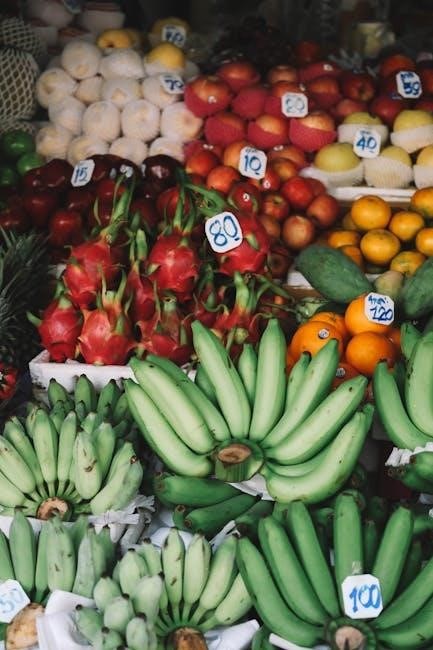
Acknowledgments
Special thanks to researchers and contributors like Brad S. and Nostalgiasaurus from Defunkd for their detailed tag guides and insights, enriching this guide.
Credits to Researchers and Contributors
The creation of this guide owes a great debt to dedicated researchers like Brad S. (spelloutdye) and Nostalgiasaurus, whose meticulous work on Fruit of the Loom tag timelines has been invaluable. Their contributions, featured on platforms like Defunkd, have provided collectors and resellers with precise year-by-year breakdowns of tag designs, fabric content, and historical context. Additionally, the vintage clothing community, including experts from ThriftCon, has shared insights into rare and authentic tags, helping enthusiasts date and identify vintage items accurately. Their collective efforts have preserved the legacy of Fruit of the Loom tags, making this guide a comprehensive resource for understanding the brand’s history and evolution.